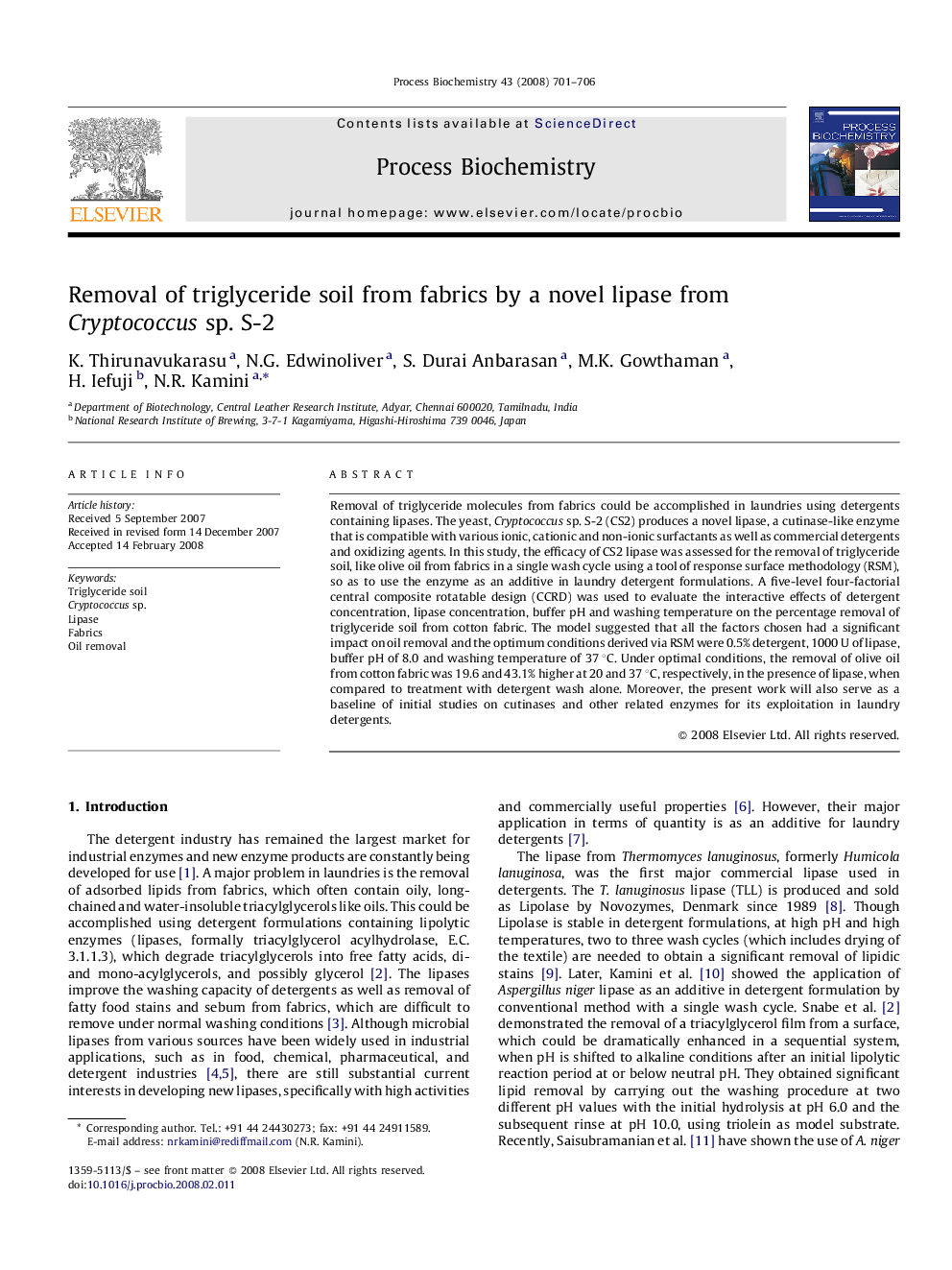| Article ID | Journal | Published Year | Pages | File Type |
|---|---|---|---|---|
| 35566 | Process Biochemistry | 2008 | 6 Pages |
Removal of triglyceride molecules from fabrics could be accomplished in laundries using detergents containing lipases. The yeast, Cryptococcus sp. S-2 (CS2) produces a novel lipase, a cutinase-like enzyme that is compatible with various ionic, cationic and non-ionic surfactants as well as commercial detergents and oxidizing agents. In this study, the efficacy of CS2 lipase was assessed for the removal of triglyceride soil, like olive oil from fabrics in a single wash cycle using a tool of response surface methodology (RSM), so as to use the enzyme as an additive in laundry detergent formulations. A five-level four-factorial central composite rotatable design (CCRD) was used to evaluate the interactive effects of detergent concentration, lipase concentration, buffer pH and washing temperature on the percentage removal of triglyceride soil from cotton fabric. The model suggested that all the factors chosen had a significant impact on oil removal and the optimum conditions derived via RSM were 0.5% detergent, 1000 U of lipase, buffer pH of 8.0 and washing temperature of 37 °C. Under optimal conditions, the removal of olive oil from cotton fabric was 19.6 and 43.1% higher at 20 and 37 °C, respectively, in the presence of lipase, when compared to treatment with detergent wash alone. Moreover, the present work will also serve as a baseline of initial studies on cutinases and other related enzymes for its exploitation in laundry detergents.
